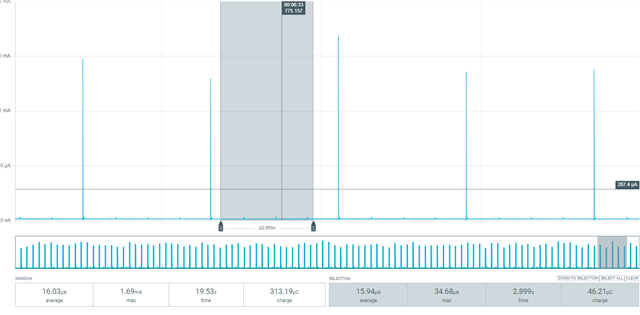Hi all,
I want to use UART periodically, but because I need to communicate with other standard UART, I cannot use LPUART
I saw that Zephyr's demos all use CONF_SERIAL=y, which has an impact on power consumption
I saw the demo of tx_rx_non-blocking, but there is no option for nrf54l15. I'm not sure if it can be used.
Do you have any simple low-power demos?




